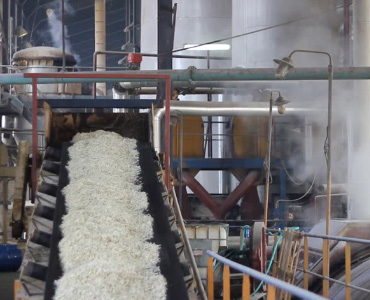Efficient Cane Sugar Processing Chemicals: Improve Yield and Quality
Efficient Cane Sugar Processing Chemicals: Improve Yield and Quality
Blog Article
Maximizar Rendimientos Y Minimizar Costos: Estrategias Avanzadas Para La Optimización Química Del Procesamiento De Azúcar De Caña
In the realm of walking cane sugar processing, the pursuit of making the most of returns while concurrently reducing prices stands as a formidable difficulty that calls for a tactical mix of innovative chemical optimization methods. The details of this endeavor dig right into the core of efficiency, where every aspect of the procedure plays a crucial role in accomplishing ideal end results. By exploring the ins and outs of chemical analysis, enzyme use, pH control, purification, and distillation methods, a landscape rich with chances for improvement and development arises. Amidst this detailed web of techniques lies the pledge of opening untapped possibility and revolutionizing the very essence of sugar production. Cane Sugar Processing Chemicals.
Chemical Analysis for Efficiency
Chemical evaluation plays a crucial duty in improving the effectiveness of sugar cane processing by providing critical understandings into the composition and residential properties of the raw materials. By conducting thorough chemical analyses on sugar walking stick examples, cpus can figure out the specific concentrations of sucrose, sugar, fructose, and various other components existing in the raw material. This information is crucial for optimizing the different phases of the sugar walking stick handling chain, from grating to crystallization.
In addition, chemical evaluation allows cpus to recognize pollutants such as organic acids, healthy proteins, and minerals that can affect the quality and return of the final sugar item. By quantifying these impurities, cpus can apply targeted methods to remove or alleviate their effects, eventually enhancing the overall effectiveness of the processing plant.
Furthermore, chemical analysis assists in the surveillance of process criteria such as pH, temperature, and thickness, enabling cpus to make real-time adjustments to make certain optimal conditions for sugar removal and crystallization. In general, a thorough understanding of the chemical structure of sugar walking cane is important for maximizing yields, decreasing costs, and maintaining high product top quality in the sugar manufacturing industry.

Enzyme Application for Enhanced Returns
With a tactical strategy to enzyme usage, sugar walking cane processors can dramatically improve their yields while keeping operational effectiveness in the manufacturing process. Enzymes play a critical role in sugar walking stick handling by breaking down complicated carbs into easier sugars, hence increasing the general sugar removal efficiency. By integrating details enzymes customized to target the different elements of sugar cane, such as cellulose and hemicellulose, cpus can boost the launch of sugars during extraction.
Enzyme usage provides the advantage of maximizing sugar yields from the raw product while minimizing the power and sources needed for handling. With cautious choice and application of enzymes, sugar walking cane cpus can maximize their procedures to accomplish higher yields and success.
Ph Control for Optimal Processing
Enzyme utilization for raised yields in sugar walking stick processing lays the foundation for addressing the critical facet of pH control for optimum processing effectiveness. Maintaining the ideal pH degree throughout various phases of sugar walking cane More Bonuses processing is important for taking full advantage of yields and decreasing expenses. pH control is especially essential throughout the removal and Recommended Reading explanation procedures. In the extraction stage, preserving the correct pH aids in accomplishing efficient sucrose removal from the walking stick. Controlling the pH throughout information aids in the rainfall of impurities and non-sucrose parts, causing a purer final item. Furthermore, pH affects the activity of enzymes associated with the breakdown of macromolecules, influencing the general efficiency of the process. By thoroughly checking and changing the pH degrees at different handling actions, sugar cane cpus can enhance sugar healing prices, lower chemical usage, and enhance the total production procedure. Reliable pH control not only enhances the top quality of the final item yet additionally adds to sustainable and affordable sugar walking cane processing operations.
Advanced Filtering Methods
Applying advanced filtration techniques in sugar cane handling boosts the performance and pureness of the end product with fine-tuned separation techniques. By integrating advanced filtering technologies, such as membrane filtration and turned on carbon purification, sugar walking cane processing plants can achieve higher levels of sugar recovery and enhanced high quality control.

Activated carbon filtration is another innovative strategy that helps in the removal of colorants, off-flavors, and residual pollutants from sugar walking stick products. By making use of turned on carbon's adsorption buildings, this purification technique check out here enhances the quality and taste of the sugar, meeting the high requirements demanded by customers and market policies.
Energy-Efficient Purification Techniques
Energy-efficient distillation approaches are important for optimizing the sugar walking stick handling market's power usage while preserving high-grade item criteria. Standard purification procedures can be energy-intensive, leading to greater manufacturing costs and ecological impacts (Cane Sugar Processing Chemicals). Carrying out energy-efficient purification methods, such as vacuum purification or molecular distillation, can substantially reduce energy needs while improving general procedure performance
Vacuum purification involves reducing the stress within the purification system, which lowers the boiling point of the fluid combination being processed. This reduction in boiling factor lowers the energy needed for evaporation, leading to power financial savings compared to conventional distillation techniques.
On the various other hand, molecular purification utilizes short path purification strategies under high vacuum cleaner problems to separate compounds based on their molecular weight. This method is especially efficient for heat-sensitive materials, as it runs at reduced temperature levels, reducing energy consumption and preserving product quality.
Final Thought

Report this page